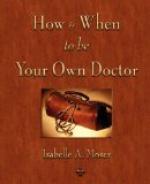What is common between meat-eating Eskimos, isolated highland Swiss living on rye bread, milk and cheese; isolated Scottish island Celts with a dietary of oat porridge, kale and sea foods; highland central Africans (Malawi) eating sorghum, millet tropical root crops and all sorts of garden vegetables, plus a little meat and dairy; Fijians living on small islands in the humid tropics at sea level eating sea foods and garden vegetables. What they had in common was that their foods were all were at the extreme positive end of the Health = Nutrition / Calories scale. The agriculturists were on very fertile soil that grew extraordinarily nutrient-rich food, the sea food gatherers were obtaining their tucker from the place where all the fertility that ever was in the soil had washed out of the land had been transported—sea foods are also extraordinarily nutrient rich.
The group with the very best soil and consequently, the best health of all were, by lucky accident, the Hunza. I say “lucky” and “accident” because the Hunza and their resource base unknowingly developed an agricultural system that produced the most nutritious food that is possible to grow. The Hunza lived on what has been called super food. There are a lot of interesting books about the Hunza, some deserving of careful study. (Wrench, 1938; Rodale, 1949)
Finding Your Ideal Dietary
Anyone that is genuinely interested in having the best possible health should make their own study of the titles listed in the bibliography in the back of this book. After you do, award yourself a BS nutrition. I draw certain conclusions from this body of data. I think they help a person sort out the massive confusion that exists today about proper diet.
First principle: Homo Sapiens clearly can posses extreme health while eating very different dietary regimens. There is no one right diet for humans.
Before the industrial era almost everyone on Earth ate what was produced locally. Their dietary choices were pretty much restricted to those foods that were well adapted and productive in their region. Some places grew rye, others wheat, others millet, others rice. Some places supported cows, others goats, others had few on no domesticated animals. Some places produced a lot of fruits and vegetables. Others, did not. Whatever the local dietary, during thousands of years of eating that dietary natural selection prevailed; most babies that were allergic to or not able to thrive on the available dietary, died quickly. Probably of childhood bacterial infections. The result of this weeding out process was a population closely adapted to the available dietary of a particular locale.




